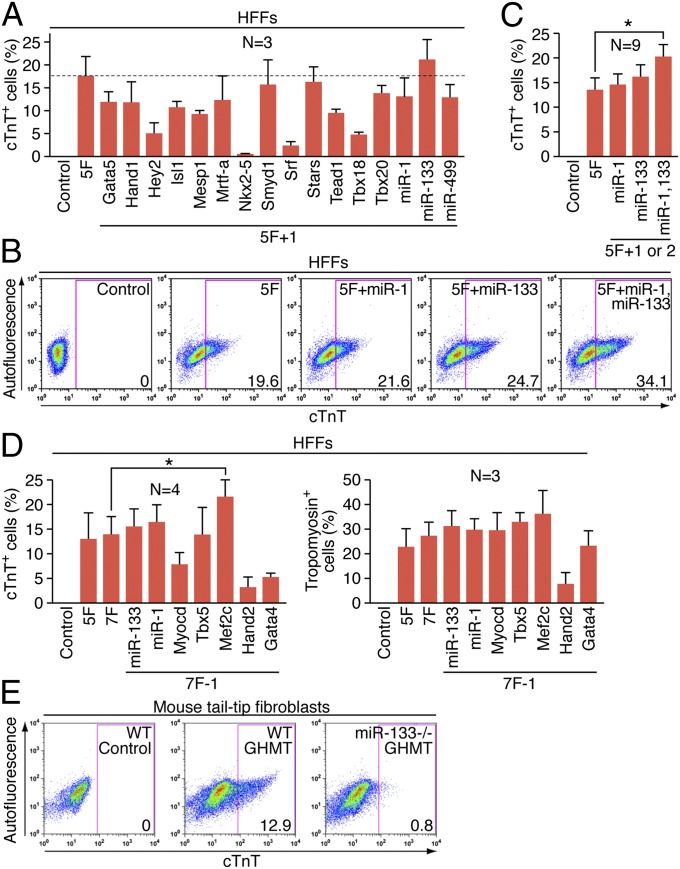Fig. 2.
Determining the optimal combination of factors to activate cardiac gene expression. (A) Summary of flow cytometry analyses of cTnT+ cells 2 wk after infection of HFFs with retroviruses expressing indicated combinations of factors. Percentage of cTnT+ cells following infection of HFFs with empty vector retrovirus, or retroviruses expressing 5F (GHMMyT) or 5F plus an indicated individual factor as shown. Data from three independent experiments are presented as mean ± SD. Dotted line indicates the percentage of cTnT+ cells induced by retroviruses expressing 5F. (B) Effect of miR-1 and miR-133 on activation of cardiac markers. Representative flow cytometry plot for analyses of cTnT+ cells 2 wk after infection of HFFs with retroviruses expressing indicated combinations of factors. Cells infected with empty vector retrovirus were used as a control. The numbers in each plot indicate the percentage of cTnT+ cells. (C) Summary of flow cytometry analyses. Percentage of cTnT+ cells following infection of HFFs with empty vector retrovirus, or retroviruses expressing 5F (GHMMyT) or 5F plus miR-1, miR-133, or both miR-1 and miR-133 as shown. Data from nine independent experiments are presented as mean ± SD. *P = 0.0062 (D) Summary of flow cytometry analyses to determine the necessity of individual 7F (GHMMyT, miR-1, miR-133). Percentage of cTnT+ (Left) or tropomyosin+ (Right) cells following infection of HFFs with empty vector retrovirus (control), or retroviruses expressing 7F (GHMMyT miR-1 miR-133) or 7F minus an indicated individual factor as shown. Data from three or four independent experiments are presented as mean ± SD. *P = 0.041. (E) Inefficient cardiac gene activation in the absence of miR-133. Representative flow cytometry plot for analyses of cTnT+ cells 1 wk after infection of retroviruses expressing GHMT into tail-tip fibroblasts isolated from either wild-type (WT) or miR-133 knockout (miR-133−/−) mice. Tail-tip fibroblasts isolated from wild type mice infected with empty vector were used as a control.

